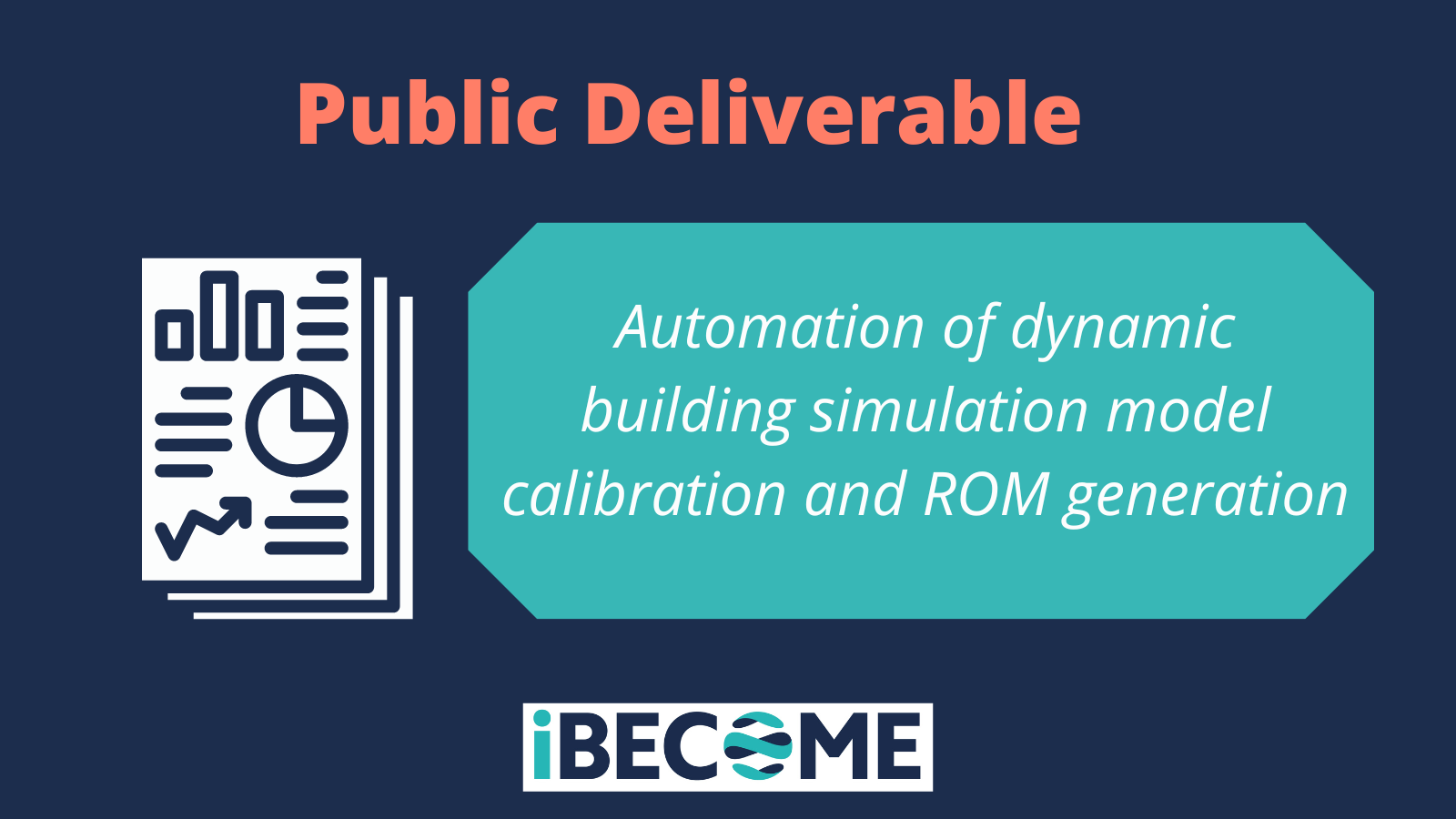“Automation of dynamic building simulation model calibration and ROM generation” is a deliverable that provides an overview of current calibration practices and describes the developments of an automated calibration tool to minimise the challenges experienced with current approaches.
This report contains an overview of this document, providing its scope, objectives, and how the tool relates to other activities in the project. It introduces model calibration, the metrics used to assess the quality of a calibrated model, existing challenges with current methods, and a literature review on potential methods for automated calibration. This includes a ranked assessment of automated approached, used to determine which approach is best suited for the iBECOME project.
The deliverable describes the tools used to develop the automated calibration process selected. It gives an overview of how the computational effort of the proposed approach may be minimised in order to ensure its suitability as a means of informing real-time building control.
The report outlines the methodology of the developed automated calibration approach. It uses the example of a case study to compare current manual calibration methods to the automated approach, using the use case for a building with minimal sensors, i.e. a smart thermostat. The results found that not only did the cloud calibration tool reduce calibration time from 2 days to under 20 minutes (i.e. 98% time reduction, comparing 20 minutes to two 8 hour working days), but it also improved model accuracy by 27%.
Finally this deliverable provides an overview of the co-simulation capabilities which can be exploited using the automated calibration platform for better informing building control.
Full deliverable report available here

